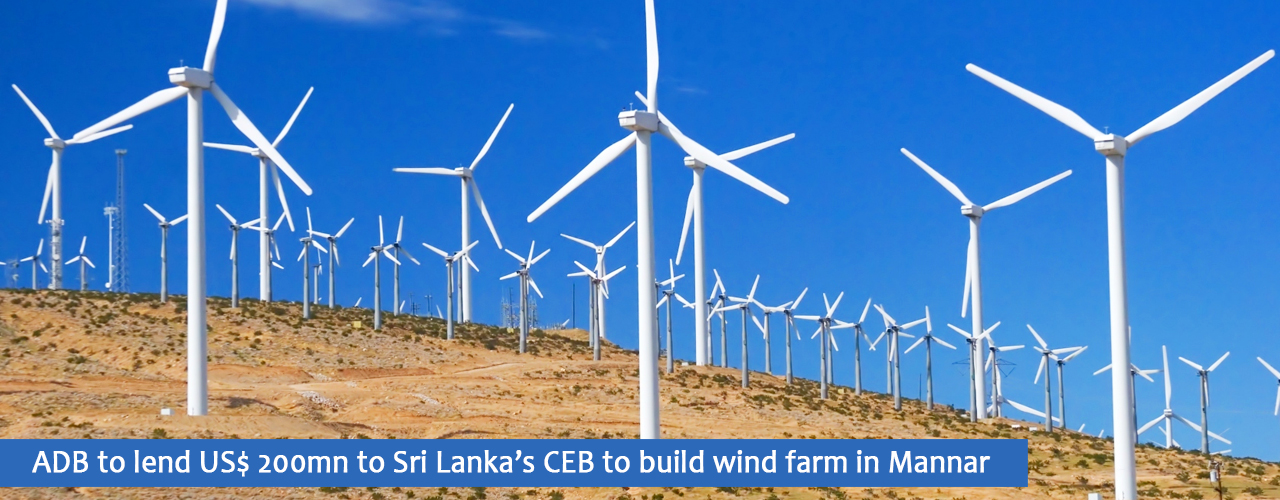ADB to lend US$ 200mn to Sri Lanka’s CEB to build wind farm in Mannar
The Asian Development Bank (ADB) is to extend a loan facility to the Ceylon Electricity Board (CEB) amounting to US$ 200 million under a sovereign guarantee to build a wind farm in the northern Mannar island.
“The new Wind Power Generation Project will not only provide access to a clean and reliable power supply in Sri Lanka, but also create an environment for further wind power development through future public-private partnerships,” Mukhtor Khamudkhanov, an ADB Principal Energy Specialist has said in a statement.
“Diversifying the country’s power generation through clean, renewable energy sources will improve the country’s energy security and environment.”
Sri Lanka’s national electricity grid reportedly has a high share of renewable energy, mainly with large hydros which are cheap. However, renewables are subject to variations in weather, which requires the utility to build thermal back-up.
In June 2016, CEB had generated 38 percent of the total 1,176 GigaWatts of energy with its own large hydros and 172 MW with more expensive non-conventional renewable energy making a total share of 53 percent.
In June 2017, renewable energy generation had fallen to 32.7 percent amid a drought.
According to reports, analysts have noted that opposition raised against coal plants has resulted in higher cost liquid fuel plants being ultimately built pushing costs even further.
The ADB has said in addition to the wind farm the project will build associated infrastructure, such as internal cabling and access roads, energy dispatch control center, and reactors to manage voltage levels.
The project is also expected to establish the procedures to enable the Ceylon Electricity Board to act as a wind park developer that can attract the private sector in future wind power generation.
These will reportedly include establishing cost benchmarks and conducting competitive bidding for future wind power projects, and managing the flow of intermittent wind energy through the power system.
OSL take:
The interest shown by the Sri Lankan government at building clean and reliable power in the country has open opportunities for more renewable energy projects that would also require quick implementation given the looming power crisis by 2020.
| Article Code : | VBS/AT/30102017/Z_4 |

